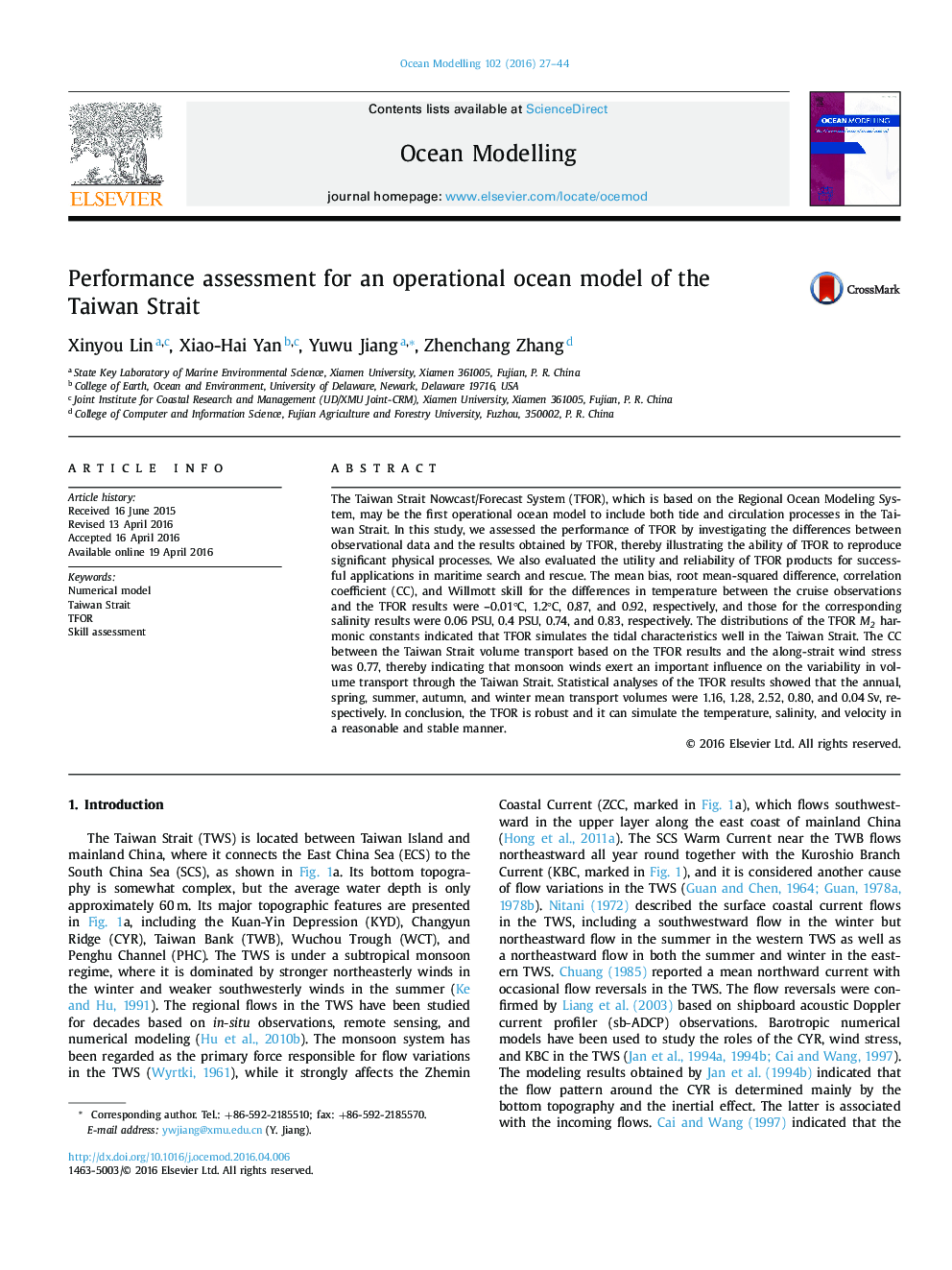| Article ID | Journal | Published Year | Pages | File Type |
|---|---|---|---|---|
| 6388036 | Ocean Modelling | 2016 | 18 Pages |
Abstract
The Taiwan Strait Nowcast/Forecast System (TFOR), which is based on the Regional Ocean Modeling System, may be the first operational ocean model to include both tide and circulation processes in the Taiwan Strait. In this study, we assessed the performance of TFOR by investigating the differences between observational data and the results obtained by TFOR, thereby illustrating the ability of TFOR to reproduce significant physical processes. We also evaluated the utility and reliability of TFOR products for successful applications in maritime search and rescue. The mean bias, root mean-squared difference, correlation coefficient (CC), and Willmott skill for the differences in temperature between the cruise observations and the TFOR results were -0.01°C, 1.2°C, 0.87, and 0.92, respectively, and those for the corresponding salinity results were 0.06 PSU, 0.4 PSU, 0.74, and 0.83, respectively. The distributions of the TFOR M2 harmonic constants indicated that TFOR simulates the tidal characteristics well in the Taiwan Strait. The CC between the Taiwan Strait volume transport based on the TFOR results and the along-strait wind stress was 0.77, thereby indicating that monsoon winds exert an important influence on the variability in volume transport through the Taiwan Strait. Statistical analyses of the TFOR results showed that the annual, spring, summer, autumn, and winter mean transport volumes were 1.16, 1.28, 2.52, 0.80, and 0.04 Sv, respectively. In conclusion, the TFOR is robust and it can simulate the temperature, salinity, and velocity in a reasonable and stable manner.
Related Topics
Physical Sciences and Engineering
Earth and Planetary Sciences
Atmospheric Science
Authors
Lin Xinyou, Yan Xiao-Hai, Jiang Yuwu, Zhang Zhenchang,
